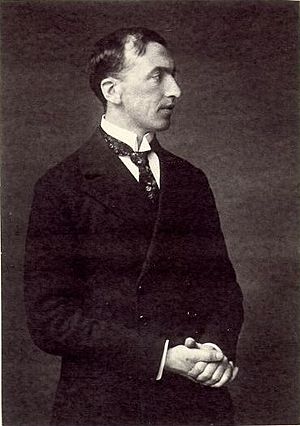Hans Gerhard Creutzfeldt facts for kids
Quick facts for kids
Hans Gerhard Creutzfeldt
|
|
|---|---|

Creutzfeldt c. 1920
|
|
| Born | June 2, 1885 Harburg upon Elbe, Hamburg, German Empire
|
| Died | December 30, 1964 (aged 79) |
| Education | University of Jena, University of Rostock |
| Known for |
|
| Medical career | |
| Profession | Medical Doctor |
| Institutions | Neurological Institute in Frank am Main |
| Sub-specialties | Neurology, Neuropathology |
Hans Gerhard Creutzfeldt (born June 2, 1885 – died December 30, 1964) was a German doctor who studied the brain and its diseases. He was a neurologist and a neuropathologist. He is often recognized for being the first to describe a brain disease called Creutzfeldt–Jakob disease. He was born in Harburg upon Elbe and passed away in Munich.
Contents
About Hans Creutzfeldt
Hans Creutzfeldt was born in Harburg, a part of Hamburg, in 1885. His family had a history of working in medicine. When he was 18, he joined the German army for a short time.
After his army service, he went to medical school. He studied at the University of Jena and the University of Rostock, earning his doctor's degree in 1909. He also trained at a hospital in Hamburg. After becoming a doctor, he decided to travel the world. He worked as a ship's surgeon and sailed across the Pacific Ocean. During his travels, he learned about local cultures, languages, and tropical plants.
In 1912, Creutzfeldt returned to Germany. He worked at several important clinics that focused on brain and mental health. These included places in Frankfurt am Main, Breslau, Kiel, Berlin, and Munich.
During the First World War, Creutzfeldt served as a medical officer. He survived when his ship, the SMS Greif, sank. He was captured but later sent back to Germany. He continued to serve in the Imperial German Navy until the war ended in 1918.
Discovering Brain Diseases
In 1920, Creutzfeldt became a professor in Kiel. By 1925, he was a special professor of psychiatry and neurology. In 1938, he became a full professor and director of the university's brain and mental health department in Kiel.
He is famous for helping to identify a serious brain disease. He worked with another doctor, Alfons Maria Jakob, to describe it. This disease is now known as Creutzfeldt–Jakob disease. It causes the brain tissue to develop tiny holes, making it look like a sponge. We now know this disease is caused by unusual proteins called prions. Prions are like misfolded proteins that can make other normal proteins misfold too.
Later Life and World War II
When the Second World War began, Creutzfeldt was 54 years old. He did not support the Nazi government. He bravely helped to save many people from being sent to concentration camps. He also managed to protect almost all of his patients from a Nazi program called Aktion T4. This program cruelly murdered many people with mental illnesses. It was very rare for a doctor to save so many patients during that time. During the war, his home and clinic were destroyed by bombs.
After the war, he was the director of the University of Kiel for six months. However, he was later dismissed by the British forces who occupied Germany. He tried to rebuild the university, but he had disagreements with the British. He wanted to allow more former army officers to study there. In 1953, Creutzfeldt left his work in Kiel and moved to Munich. He became a professor emeritus, which means he was a retired professor who kept his title.
Family Life
Hans Creutzfeldt was married to Clara Sombart. Her father was a well-known economist. Hans and Clara had five children. Two of their children also became famous doctors: Otto Detlev Creutzfeldt became a neurologist, and Werner Creutzfeldt (1924–2006) became a renowned internist. Hans Creutzfeldt passed away in Munich in December 1964.
See also
 In Spanish: Hans-Gerhard Creutzfeldt para niños
In Spanish: Hans-Gerhard Creutzfeldt para niños
- Creutzfeldt–Jakob disease, a brain disease caused by prions that affects parts of the brain and spinal cord.
- Adrenoleukodystrophy, a rare brain disorder also known as Siemerling-Creutzfeldt Disease. It causes brain damage and problems with the adrenal glands.

